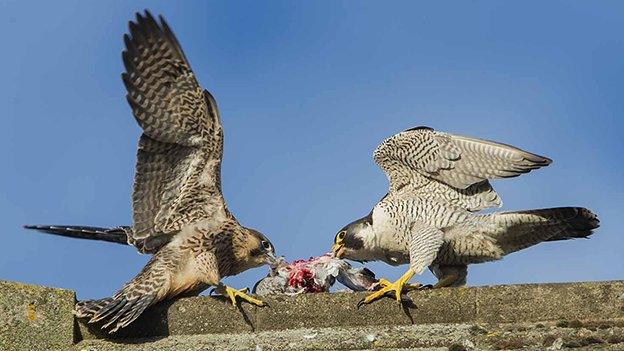Norwich Cathedral peregrine falcons: Watching the watchers
- Published

The peregrine falcon can fly at more than 200mph
A grey blur with flashes of yellow streaks across the sky at speeds of 200mph - a "pure muscle assassin" chasing down its prey one minute, a doting parent feeding three chicks at the top of a wind-buffeted cathedral spire the next.
The daily wildlife drama surrounding the Norwich Cathedral peregrine falcon family has become addictive viewing for millions of people watching online around the world and for thousands of visitors to the cathedral's watch point.
For one man, observing the chicks' progress has become a labour of love as he spends hours in his "den" recording them via a live web stream to tell their story.
"I really try not to get paternal - but I probably do," said Dave Gittens, a volunteer with the Hawk and Owl Trust (HOT) who is responsible for the live nest-cams, external.
The adult pair have bred successfully since 2012
"I try really hard to be objective, they are wild animals, they are doing things we might find distasteful or difficult to watch - and when they die naturally, to watch a chick go through its last moments of life is terrible."
Mr Gittens said he spends what "feels like 90 days" watching the breeding season, external - but quickly adds "it's not an arduous task, it's a real privilege to be in a position where you can see these birds."

Dave Gittens watches the cathedral nest webcams from his "den" of operations a few miles away near Fakenham
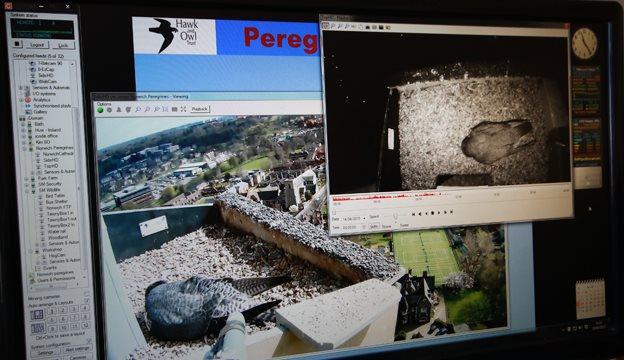
The Hawk and Owl Trust has invested £5,000 in new high-definition cameras on the nest
The peregrine falcons, nesting on a special platform on the cathedral spire 246ft (75m) above the ground, have been breeding in Norwich since 2011 as part of an urban peregrine breeding programme managed by the Hawk and Owl Trust.
This year's chicks, among the first in the city for more than 200 years after the pair's first successful clutch in 2012, hatched at the end of April.
The juvenile chicks can easily be blown off the platform edge in the high winds that whistle around the cathedral spire
Mr Gittens said the moment was exhilarating.
"The excitement of seeing the first chick hatch, watching with trepidation as they walk up and down the nest ledge.
"Your knees go weak, you get bouts of vertigo for them, you can almost hear the people screaming on Facebook, external - at this stage they are right on the cusp of being flight ready - but they're only just ready.
"Until you see them flying around and all the rest of it - it's heart-stopping," he said.
'Hands-on' approach
Mr Gittens describes himself as "a cog in the wheel" with more than 100 volunteers working on the urban peregrine project.
While he watches the birds in their nest from the comfort of his den, others tackle the elements to take a more "hands-on" approach to capturing images of them.
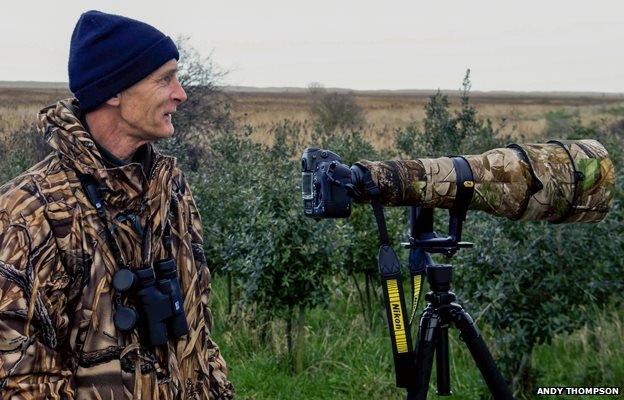
Fledging time is often the "most exciting to photograph the peregrines," says Andy Thompson
"I quickly became addicted to these superb and charismatic birds," said Norwich-based photographer Andy Thompson, who can spend more than 270 hours taking pictures of the adults and their chicks during the breeding season.
"It can be quite cold and bleak... but any activity gets the adrenaline going as you follow them around the skies."
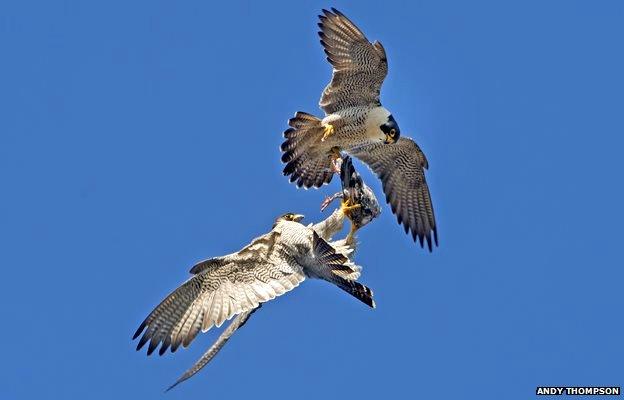
The adults help teach the juveniles to hunt by making food passes mid-flight
"Fledging time is often the most exciting period... but it can also be quite an upsetting time as unfortunately the birds do have accidents and may get killed," said Mr Thompson.
"This is a natural thing that happens in urban and rural nesting areas, but it is still somewhat a blow when a bird you have watched for many weeks is suddenly no more."
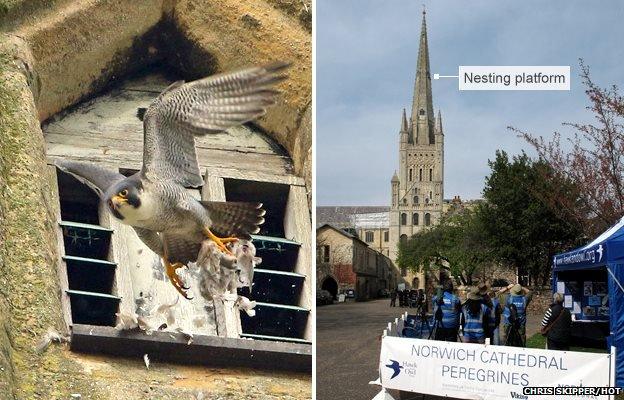
More than 32,000 people visited the cathedral watch point in 2014
'Pure muscle assassin'
The birds are the fastest thing on earth with an ability to fly at more than 200mph (322km/h) when diving for prey, making them faster than a cheetah and on-par with a Formula 1 car.
Wildlife presenter Chris Packham, who returns to RSPB Minsmere, external in Suffolk for the new season of Springwatch on 25 May, is a big fan of the peregrine and the urban projects.
"They are the fastest things on earth... which struck me as almost unbelievable when I was 10 and still does now," he said.
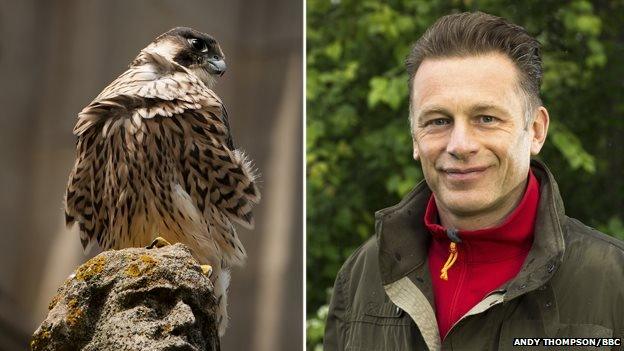
Chris Packham says if he was reincarnated as an animal he would not want to be a pigeon near a falcon
"They look pure muscle assassin, brutal, totally hard, it's the eye and the moustacial stripe and the massive feet - their weapons.
"If I was re-incarnated as another species of animal there is only one I'd be... and it isn't a pigeon."
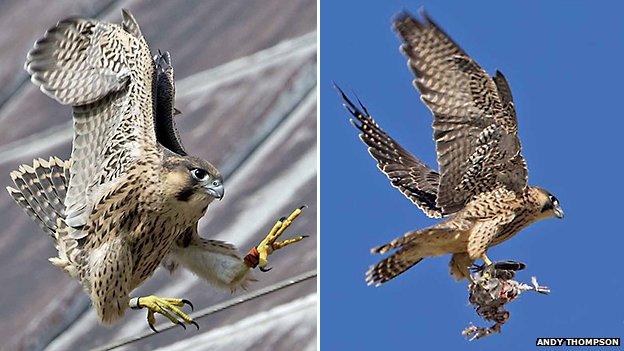
The falcons mostly feed on feral pigeons
The wildlife expert and conservationist is also a keen supporter of the urban peregrine scheme. There are a number of nesting projects on buildings across the country, external including Bath, Derby and Nottingham.
"If you own a tall building... you should be putting up nest boxes," he said.
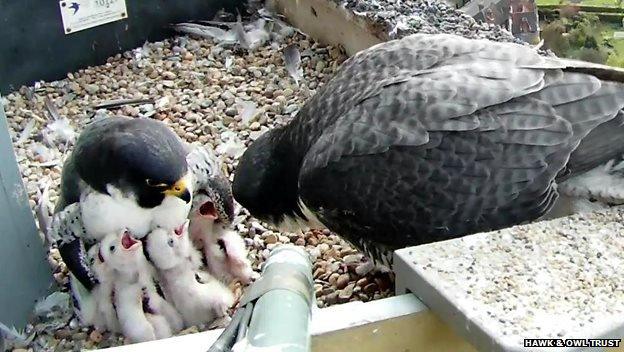
The adult peregrines are now experienced parents, here the male is brooding the chicks while the falcon feeds the new family
The hours Mr Gittens spends watching the peregrines needs an "understanding" from his wife Caroline. She says she is "very proud" of the work as it brings "so much pleasure to millions of people".
"I totally support him... it's something we both enjoy and get a kick out of," she said.
"They are just such a fantastic bird - it's great we have the technology to be able to see them 24/7 - to see the body language and the things they get up to - it's a privilege."
'Back to nature'
Peregrine falcon numbers declined during the 19th and 20th centuries due to illegal shooting and use of certain pesticides on farms.
The species became almost extinct in the 1960s but became protected in 1981, external.
There are about 1,500 breeding pairs in the UK, according to the RSPB, external. The Norfolk-based British Trust for Ornithology, external (BTO) is currently collating data from a peregrine survey recorded last summer with the results expected later in the year.
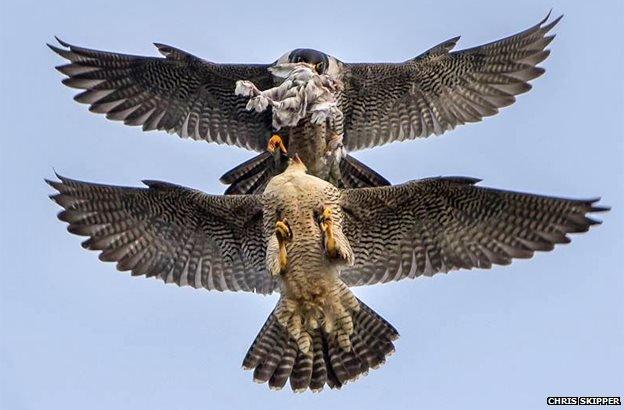
The wingspan of a adult peregrine can reach to 3.6ft (1.1m). Here the tercel (male) and falcon are making a food pass in the grounds of Norwich Cathedral
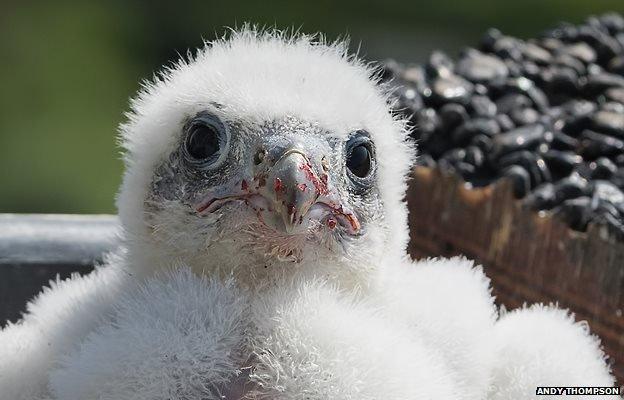
Early analysis from a new BTO survey shows more peregrines are now breeding in lowland England than during the last survey in 2002
Early analysis shows "more peregrines are now breeding in lowland England than during the last survey in 2002, especially in the urban environment," said Dawn Balmer from the trust.
Despite the long hours and heart-stopping moments, Dave Gittens said he would never change his hours of watching.
"It's rewarding - it makes you feel you've provided a service to people to bring them closer back to nature."
- Published28 April 2015
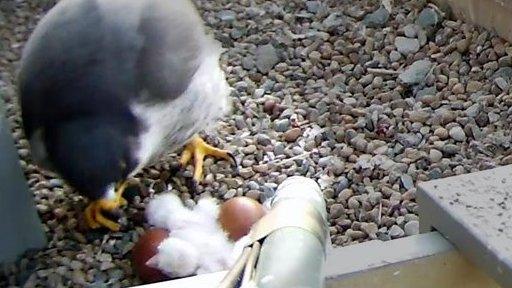
- Published22 March 2015

- Published21 March 2015
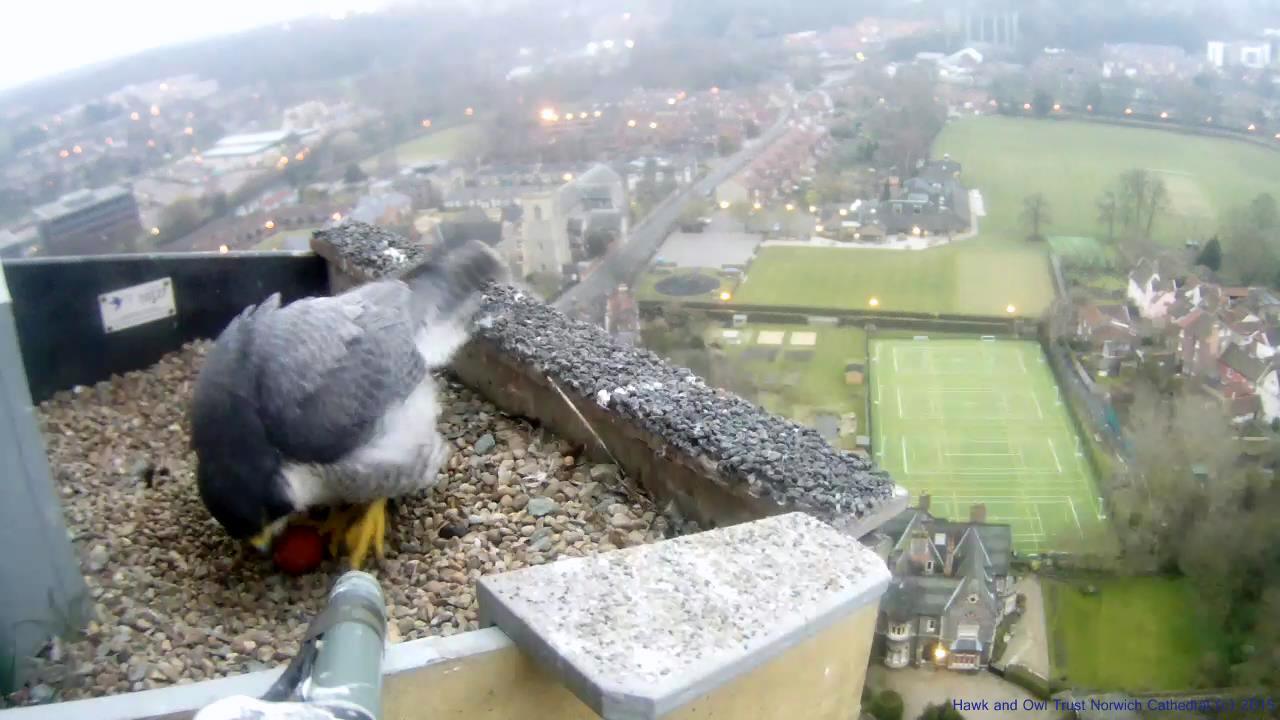
- Published14 June 2014
